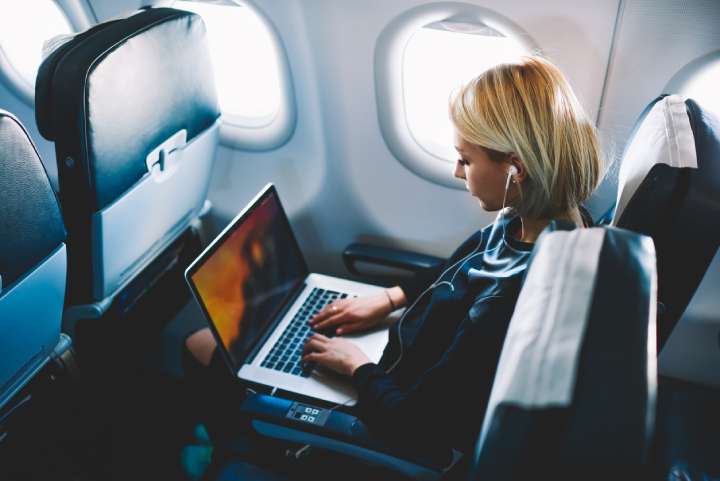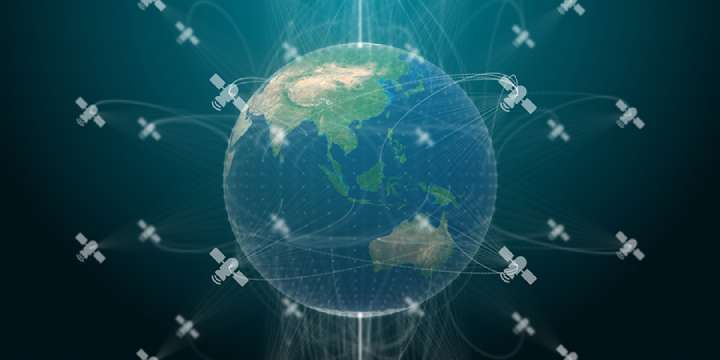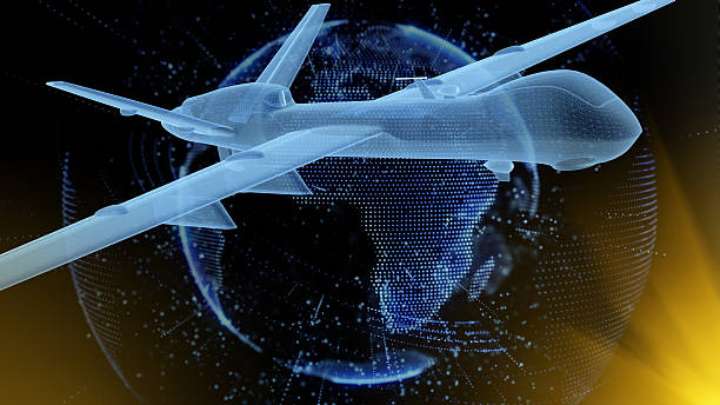In-flight connectivity has been in a holding pattern of sorts, but a convergence of factors is primed to take it to new heights.
Constellations spoke with John Peterson, Executive Director of Aviation at Iridium about the technological and economic changes that are overcoming some of the unique challenges of in-air connectivity to help drive the sector’s anticipated growth.
While inflight service has generally been costly and spotty, according to a report by Euroconsult, aero is poised for a takeoff, with the terminal market expected to show the highest growth rate among SATCOM applications, with a 12% 10-year compounded annual growth rate.
As in other markets, that trajectory is driven by basic economics, with size, weight, power, and costs coming down, while connectivity speed is going up, Peterson said,.
He attributed it to the combination of terminals getting smaller, antennas more sophisticated, equipment less expensive, and capacity and speeds increasing, to drive down costs down exponentially.
But aircraft connectivity is not one-size-fits all.
Peterson explained the two distinct aero connectivity needs, which started with L-band for safety, for pilots to talk with air traffic control to get from point A to B safely and on-time. L-band is reliable, providing clear voice in all-weather but is very low data. For context, Peterson noted that at one time “smoking fast internet service” was 64 kilobits per second, with people paying as much as $18 a megabyte on a business jet.
Then the internet happened, and connectivity wasn’t just for the flight deck, or executives to make expensive phone calls, but for the rest of the cabin, for passengers to email, surf, and stream.

Pennies on the Dollar
The biggest change, Peterson said, has been increasing capacity, with Starlink and other constellations making higher frequency Ka and Ku band ‘sexy’ for in-cabin use.
Though less reliable in wet and cloudy weather for use as a pilot safety service, Peterson said Ka and Ku were great for passengers, with speeds as fast as a hundred megabits per second and prices in the pennies per megabyte.
“When you see costs in the cabin space going from dollars per megabyte to pennies per megabyte, the affordability and the value it brings to passengers just drive the model,” Peterson said.
New, low latency constellations also provide a better service experience for data and voice, Peterson said. Signals that have to travel less distance makes applications “snappier and work more like you would expect from a cell tower,” without the delay that causes one person to talk over the other.
An Interesting Physics Problem
But delivering faster, more reliable service to aircraft that travel hundreds of miles per hour, 500 miles away from a satellite, creates more challenges than for a small, flat smartphone whose antenna can connect seamlessly to a cell tower on the ground.
That makes for an “interesting physics problem” Peterson said, about the need for quality of service to work, “no matter how bumpy the flight or how bad the weather, no matter where the aircraft is in the world, whether it’s over the Arctic or the Amazon.”
“That call has got to get through and be just as clear without exception,” he said. Which is why antenna and other value-added capabilities have taken longer to get to market.

Doing the Number$
Even so, all those new innovations have to bear out economically.
Peterson said the additional capacity of new generation satellites is making capacity a commodity that changes the math. While older satellites might allow a thousand users one megabit per second, new satellites provide hundreds of thousands of users with a hundred megabits per second, he explained.
With more capacity, more users can be brought to fill it, driving down the cost per megabyte. As a result, “You don't have to charge as much per user,” he said, which makes it more affordable and in turn attracts more users.
Offsetting Costs
But not every airline may want to shell out what might be a “low six figure” commitment for a system to get more data on the aircraft, Peterson said.
Yet, at the same time, he added, airlines lose millions of dollars a year on fraudulent onboard credit card purchases, with no way to recoup that money once the passenger leaves the aircraft.
Alternatively, a crew using a system that costs a few thousand dollars to maintain can transact a credit card in real-time or pull gate information no matter where they are in the world, he said. That not only makes it affordable but also provides an airline a return on investment within months by avoiding lost revenue from fraudulent activities, he added.

Safer Skies
Peterson ticked off other benefits from faster, global satellite coverage, including helping aircraft and UAVs share airspace more safely.
With satellites always overhead and network availability always on, no longer would aircraft transponders be at risk of losing connection to ground towers to jeopardize safety. Instead, UAV and aircraft pilots would have the ability to see all the aircraft around them to maintain safe separation and spacing for cooperative flying in airspace.
“These are the areas where satellite is becoming very helpful because the cost to put ground infrastructure to fly UAVs safely in a mixed airspace is very expensive and takes a long time,” Peterson said.
He sees satellite-expanded safety extending to other markets as well, with emerging direct-to-cell serving everyone from hikers in the wilderness to boaters at sea.
Asked what’s next for connectivity, technology, and aviation over the next 10 years, Peterson summed it by saying it was the “interconnectedness of satellites and better blending of satellite and terrestrial services.”
“Just like we're seeing with a safety service over a phone, we're going to see the aviation community use more reliable satellite links that work everywhere in the world seamlessly as opposed to the traditional clunky VHF towers that have been out there since World War II.”
Even more broadly, Peterson said that with more capacity and interconnected of satellites, that the best way to handle a data packet at a given moment in time is by seeing things that “don't have to happen on the ground anymore.”
“People won’t realize that their email first went to a cell tower then went up to a satellite to drop it somewhere else.”
To hear more about how new satellite capabilities, including cross-linked satellites, will enhance connectivity, safety, and security, benefiting more markets and users, click here.
